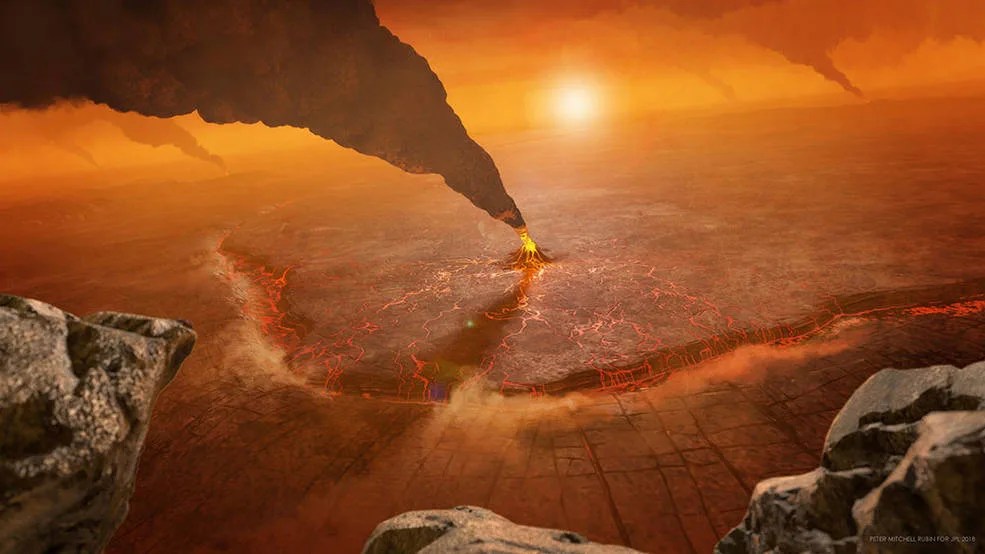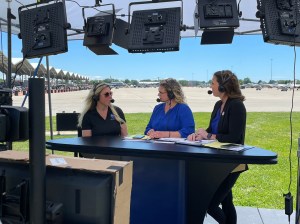NASA Transmits Hip-Hop Song to Deep Space for First Time
The stars above and on Earth aligned as an inspirational message and lyrics from the song “The Rain (Supa Dupa Fly)” by hip-hop artist Missy Elliott were beamed to Venus via NASA’s DSN (Deep Space Network). The agency’s Jet Propulsion Laboratory in Southern California sent the transmission at 10:05 a.m. PDT on Friday, July 12. […]
3 min read
Preparations for Next Moonwalk Simulations Underway (and Underwater)
The stars above and on Earth aligned as an inspirational message and lyrics from the song “The Rain (Supa Dupa Fly)” by hip-hop artist Missy Elliott were beamed to Venus via NASA’s DSN (Deep Space Network). The agency’s Jet Propulsion Laboratory in Southern California sent the transmission at 10:05 a.m. PDT on Friday, July 12.
As the largest and most sensitive telecommunication service of NASA’s Space Communications and Navigation (SCaN) program, DSN has an array of giant radio antennas that allow missions to track, send commands, and receive scientific data from spacecraft venturing to the Moon and beyond. To date, the system has transmitted only one other song into space, making the transmission of Elliott’s song a first for hip-hop and NASA.
“Both space exploration and Missy Elliott’s art have been about pushing boundaries,” said Brittany Brown, director, Digital and Technology Division, Office of Communications at NASA Headquarters in Washington, who initially pitched ideas to Missy’s team to collaborate with the agency. “Missy has a track record of infusing space-centric storytelling and futuristic visuals in her music videos so the opportunity to collaborate on something out of this world is truly fitting.”
The song traveled about 158 million miles (254 million kilometers) from Earth to Venus — the artist’s favorite planet. Transmitted at the speed of light, the radio frequency signal took nearly 14 minutes to reach the planet. The transmission was made by the 34-meter (112-foot) wide Deep Space Station 13 (DSS-13) radio dish antenna, located at the DSN’s Goldstone Deep Space Communications Complex, near Barstow in California. Coincidentally, the DSS-13 also is nicknamed Venus.
Elliott’s music career started more than 30 years ago, and the DSN has been communicating with spacecraft for over 60 years. Now, thanks to the network, Elliott’s music has traveled far beyond her Earth-bound fans to a different world.
“I still can’t believe I’m going out of this world on tour with NASA through the Deep Space Network when “The Rain” (Supa Dupa Fly) becomes the first ever hip-hop song to transmit to space!,” said Elliott. “I chose Venus because it symbolizes strength, beauty, and empowerment and I am so humbled to have the opportunity to share my art and my message with the universe!”
Two NASA missions, selected in 2021, will explore Venus and send data back to Earth using the DSN. DAVINCI (Deep Atmosphere Venus Investigation of Noble gases, Chemistry, and Imaging), led out of NASA’s Goddard Space Flight Center in Greenbelt, Maryland, is slated to launch no earlier than 2029. The VERITAS (Venus Emissivity, Radio Science, InSAR, Topography, and Spectroscopy), launching no earlier than 2031, is lead out of NASA’s Jet Propulsion Laboratory in Southern California. NASA and the DSN are also partnering with the European Space Agency’s Venus mission, Envision. A team at JPL is developing the spacecraft’s Venus Synthetic Aperture Radar (VenSAR).
In continuous operations since 1963, NASA SCaN’s DSN is composed of three complexes spaced equidistant from each other — approximately 120 degrees apart in longitude — around the planet. The ground stations are in Goldstone in California, Madrid, and Canberra in Australia.
The Deep Space Network is managed by JPL for the SCaN program within the Space Operations Mission Directorate, based at NASA Headquarters.
For more information about NASA’s Deep Space Network, visit:
https://www.nasa.gov/communicating-with-missions/dsn/
Share
Details
Related Terms
What's Your Reaction?

















































